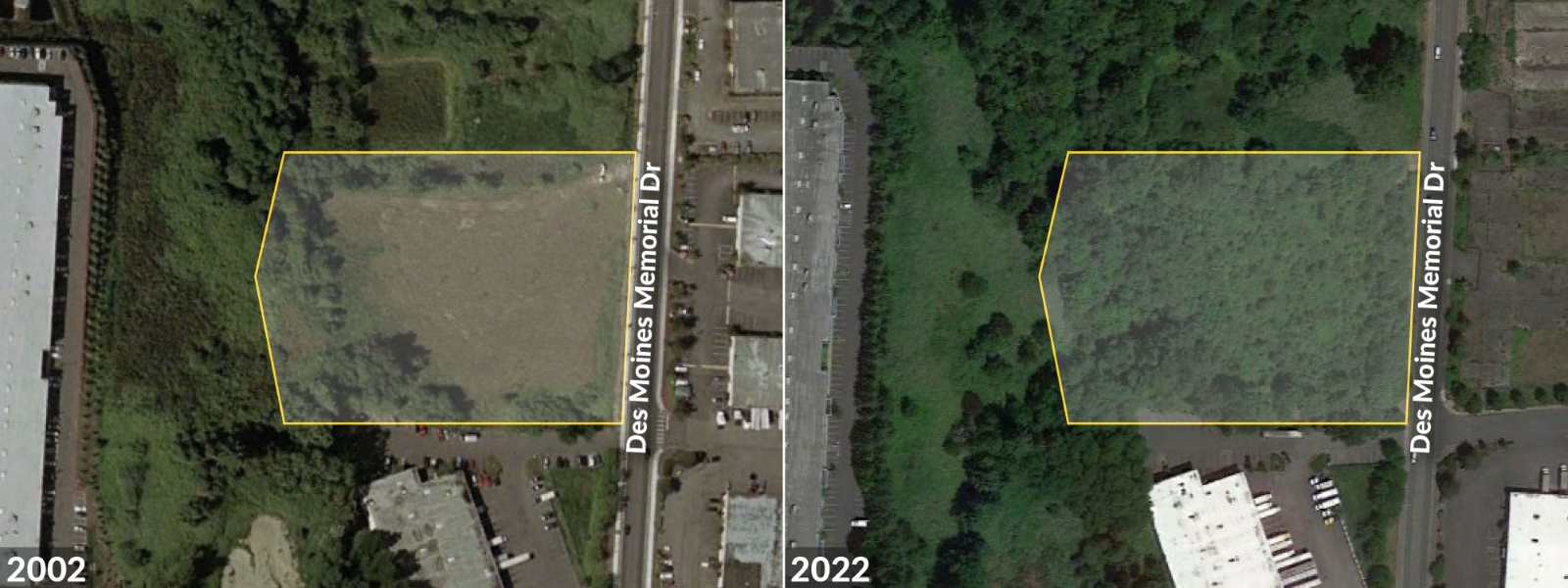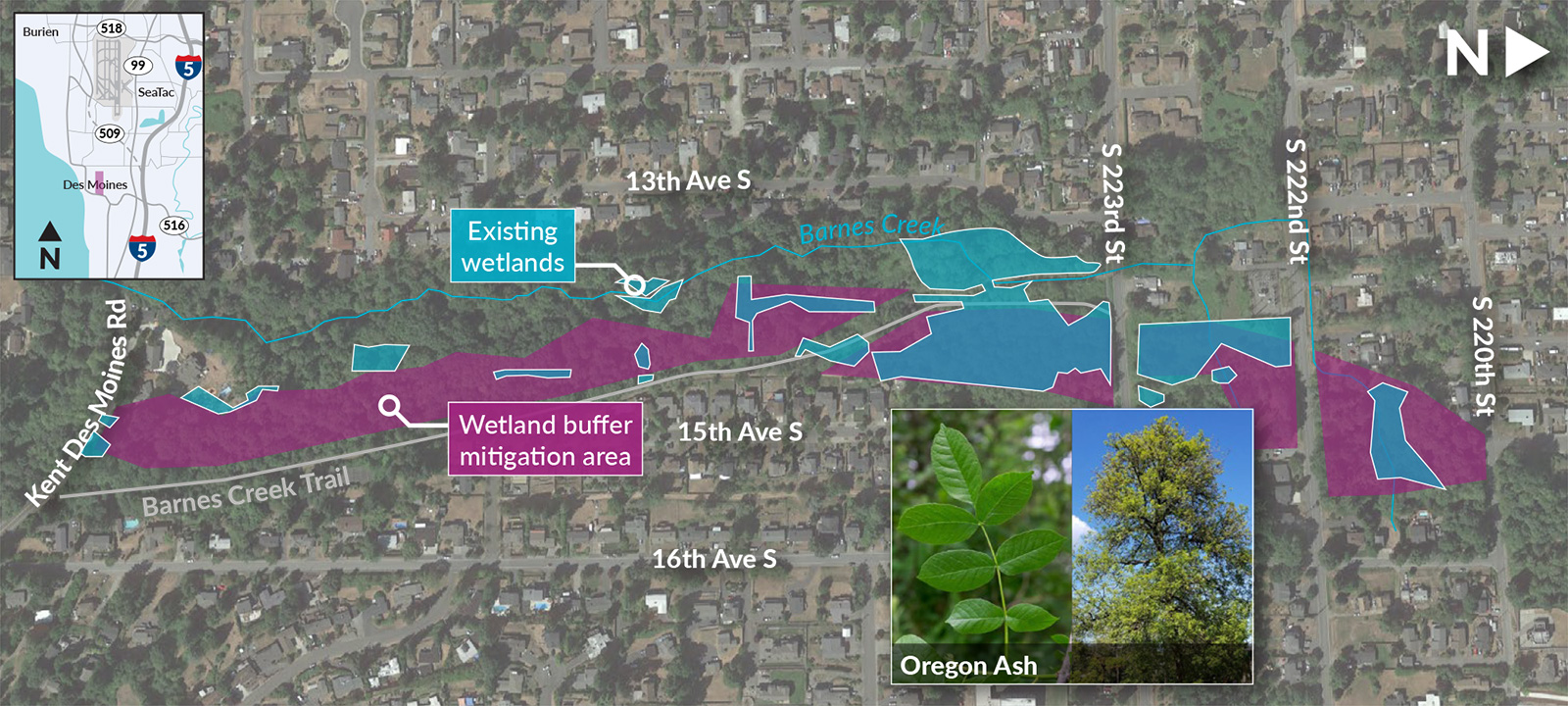This page describes project key features. The designs presented are conceptual. The design-builder will finalize schedules and designs, which may vary from the conceptual designs.
Environmental Improvements
WSDOT is committed to being a good steward of the land and a responsible partner in helping our region’s diverse ecosystem to thrive. The project team includes experts and engineers with specialties ranging from fish habitat biologists to noise analysts. Working together and alongside tribal nations, local agencies, and cities, this team develops design and mitigation strategies that reduce the impact to sensitive areas and habitats in the project region.
For example, WSDOT’s roadside restoration program not only re-integrates native plants alongside new roadways following construction, it also focuses on improving water and air quality, preserving wetlands and other habitats, controlling non-native species, and protecting against erosion.
Other project activities that help preserve and protect the natural environment within the SR 509 project region include:
- Stormwater runoff collection and treatment
- Mitigating for wetland and wetland buffer impacts
- Noise barriers
The SR 509 Completion Project’s environmental evaluations and other documents can be read on the Puget Sound Gateway Program website.
Wetland Restoration in SeaTac and Des Moines
Intentional design—such as raised roadways, fish passages, and right of way planning—can go a long way to reduce unnecessary disturbance to the natural environment. Nevertheless, WSDOT recognizes that large infrastructure projects have real consequences. This is where mitigation projects come in.
In 2007, WSDOT completed an advance wetland mitigation site just south of Sea-Tac Airport. The 3.66-acre AMB Property mitigation site offsets unavoidable wetland impacts of the SR 509 Completion Project in the form of wetland and wetland buffer re-establishment and enhancement.

In addition, WSDOT is planning to undertake an even larger wetland restoration project at Barnes Creek in Des Moines. The full mitigation site extends from Kent-Des Moines Road to South 220th Street and, once complete, will be accessible via the Des Moines Creek Trail. The Barnes Creek site further offsets potential wetland impacts of the SR 509 Completion Project.

